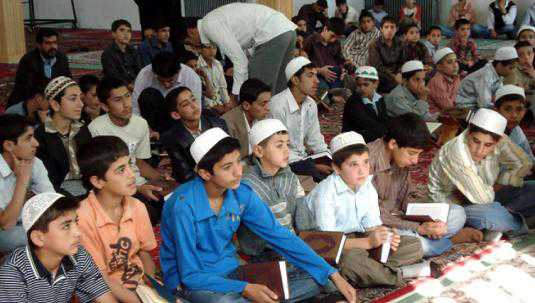
By AZAD KURDI
ERBIL, Iraqi Kurdistan: Not long ago, three 19-year old boys left Iran’s Kurdish region to Afghanistan to join al-Qaeda. In the mid of last month, it was reported that they had been killed by the American and coalition forces.
The dead fighters were Kurds from the city of Saqiz where majority of the people are Sunni Kurds, poverty and unemployment on the rise.
Here in this city and other Kurdish towns of Iran, residents point to an increasing number of extremist Salafi groups spreading Jihadist ideologies and swaying beliefs of dozens of adults.
Many Kurds warned that the region was increasingly becoming a place to recruit fighters for al-Qaeda.
Iran’s Kurds are subjected to a doubled-discrimination. Firstly they are discriminated for being Kurds not Persians and second they for being Sunnis not Shiites.
Right after the disappearance of their sons, the parents of the three dead fighters started to file lawsuits against a number of Mullahs preaching extremism and anti-Western ideas.
Rudaw found out that none of the Mullahs had been arrested by the Shiite-led government.
Kurdish youths fighting against American and Western forces in Afghanistan and Iraq is not a new thing. Last year, Suleiman Ahmadi, Iranian Kurds, was found killed in Afghanistan.
Experts see the rise of unemployment, using drugs, poverty in the region as main reasons why the adults join al-Qaeda.
“All of these play roles in strengthening the groups,” said Khalid Tawakwli, Iranian Kurdish sociologist.
Before 2003, in the Iraqi Kurdish mountains of Hawraman bordering Iran, there was a Kurdish offshoot of al-Qaeda under the name of “Ansar al-Islam.”
Their bases were bombed by the American missiles at the outbreak of the Iraq war, many members killed and the rest fled to Iran, south and center of Iraq and abroad.
The leader of the group, Mullah Krekar, is now based in Norway. It is not clear whether any of the former Ansar al-Islam members is working in the current Iranian-based groups.
But a senior member of a pro-Kurdish Iranian opposition party, Aram Mudaris, was convinced that many of the senior members of the Iranian extremist groups had been ex-members of Ansar al-Islam fled to Iran after the US-bombardment.
“Those groups are logistically and financially supported by the Iranian regime” said Mudaris, senior leader of Komala party.
He said that the groups have mainly relied on using mosques to practice their political work and convene with their members since the 2003 US-led invasion.
Some other experts say that Iran’s toleration of these groups is to kill two birds with one stone.
The first goal is domestic, that is, undermining Kurdish nationalism. The second one is to use the groups to weaken U.S. counter insurgency strategy in Afghanistan and Iraq.
, 11/08/2010

Leave a Reply